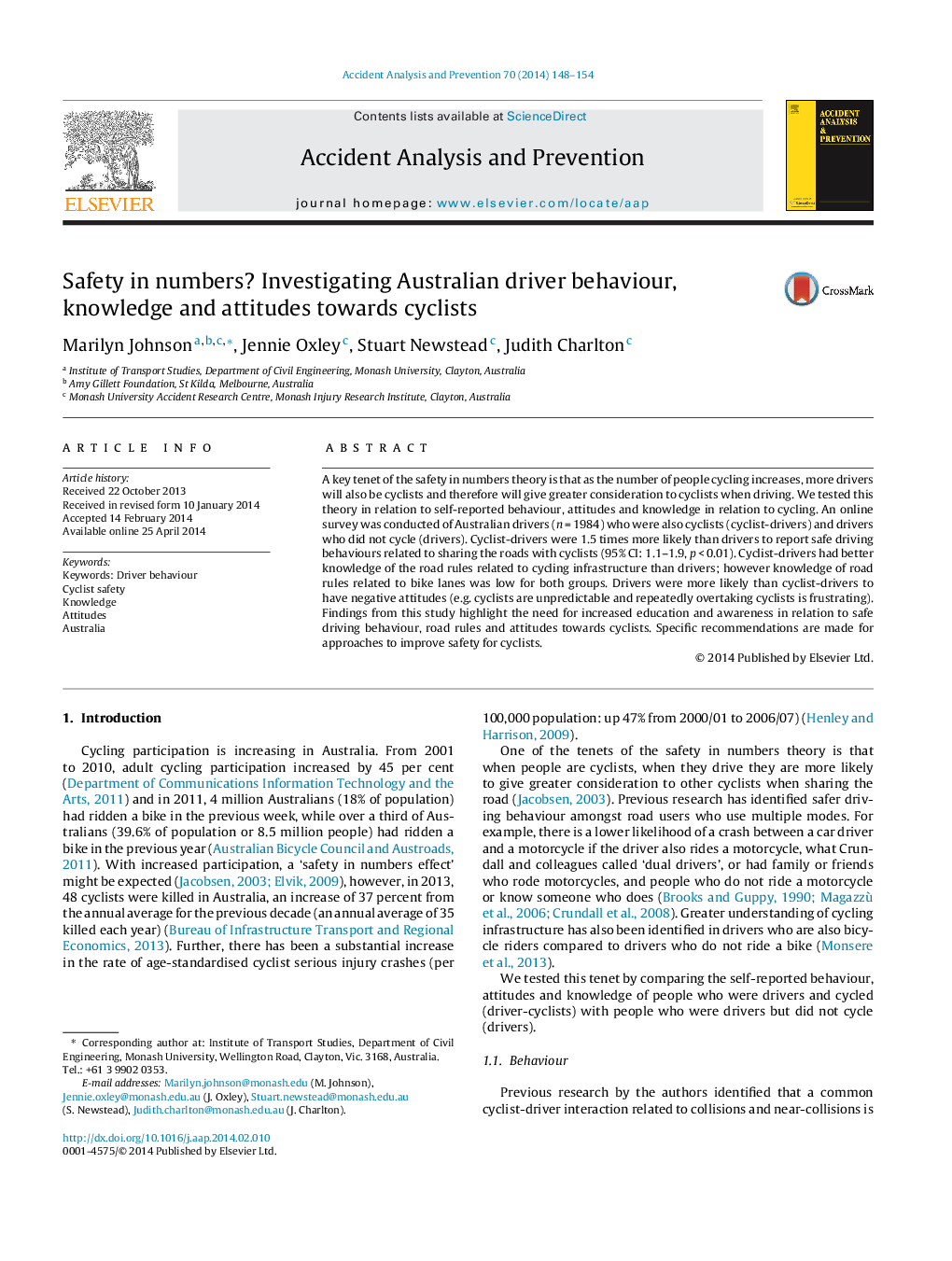| Article ID | Journal | Published Year | Pages | File Type |
|---|---|---|---|---|
| 572311 | Accident Analysis & Prevention | 2014 | 7 Pages |
A key tenet of the safety in numbers theory is that as the number of people cycling increases, more drivers will also be cyclists and therefore will give greater consideration to cyclists when driving. We tested this theory in relation to self-reported behaviour, attitudes and knowledge in relation to cycling. An online survey was conducted of Australian drivers (n = 1984) who were also cyclists (cyclist-drivers) and drivers who did not cycle (drivers). Cyclist-drivers were 1.5 times more likely than drivers to report safe driving behaviours related to sharing the roads with cyclists (95% CI: 1.1–1.9, p < 0.01). Cyclist-drivers had better knowledge of the road rules related to cycling infrastructure than drivers; however knowledge of road rules related to bike lanes was low for both groups. Drivers were more likely than cyclist-drivers to have negative attitudes (e.g. cyclists are unpredictable and repeatedly overtaking cyclists is frustrating). Findings from this study highlight the need for increased education and awareness in relation to safe driving behaviour, road rules and attitudes towards cyclists. Specific recommendations are made for approaches to improve safety for cyclists.
